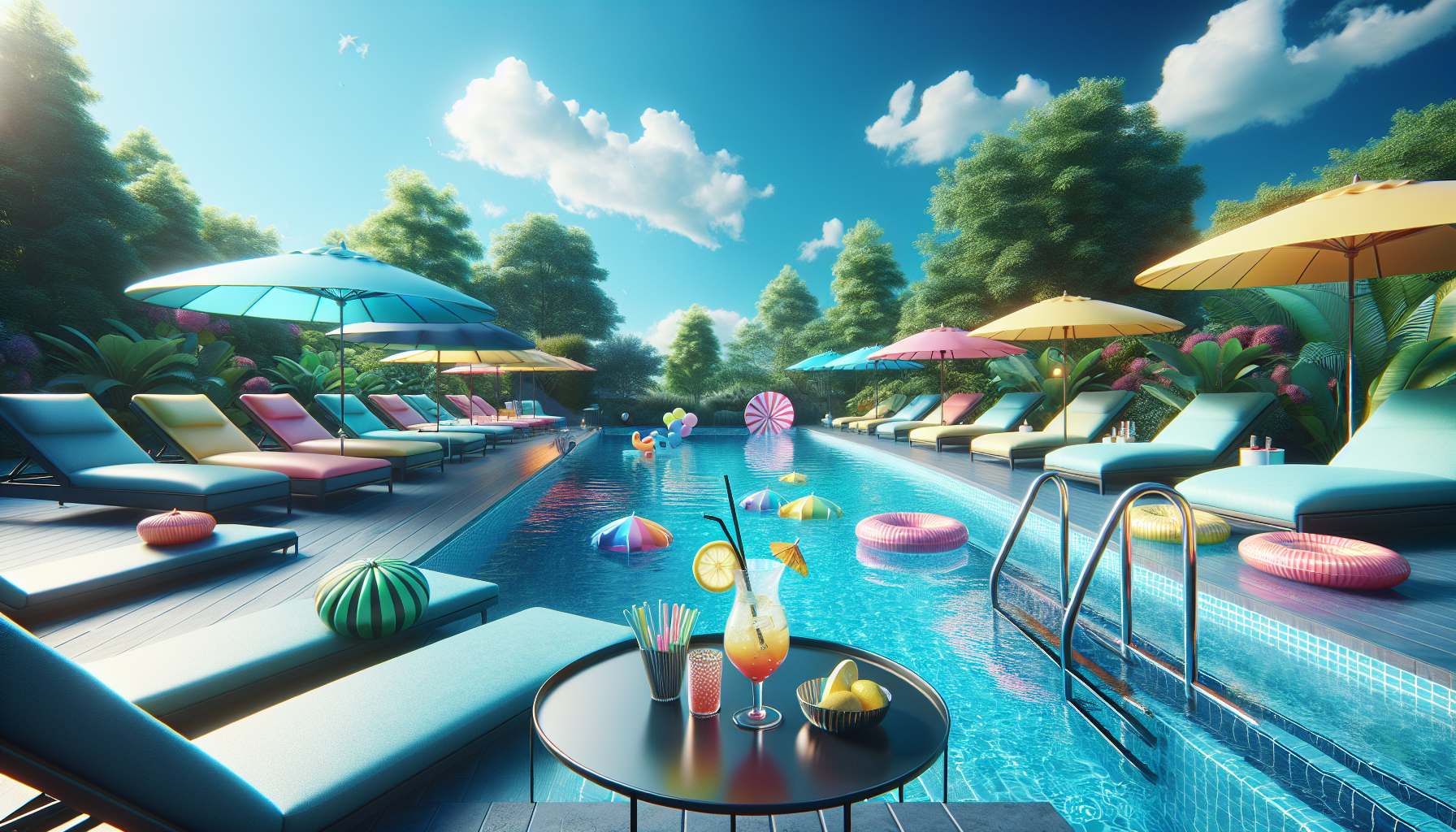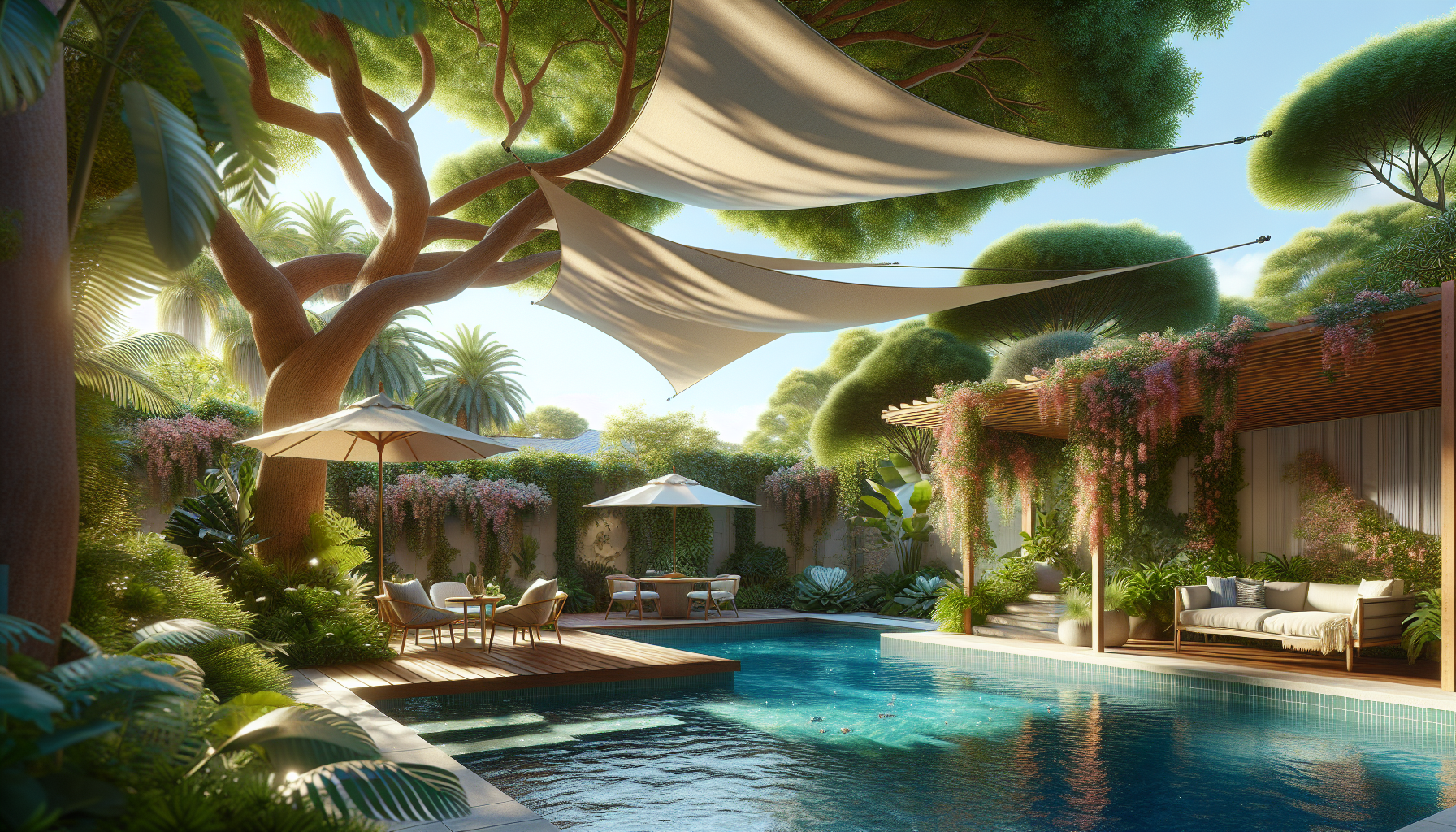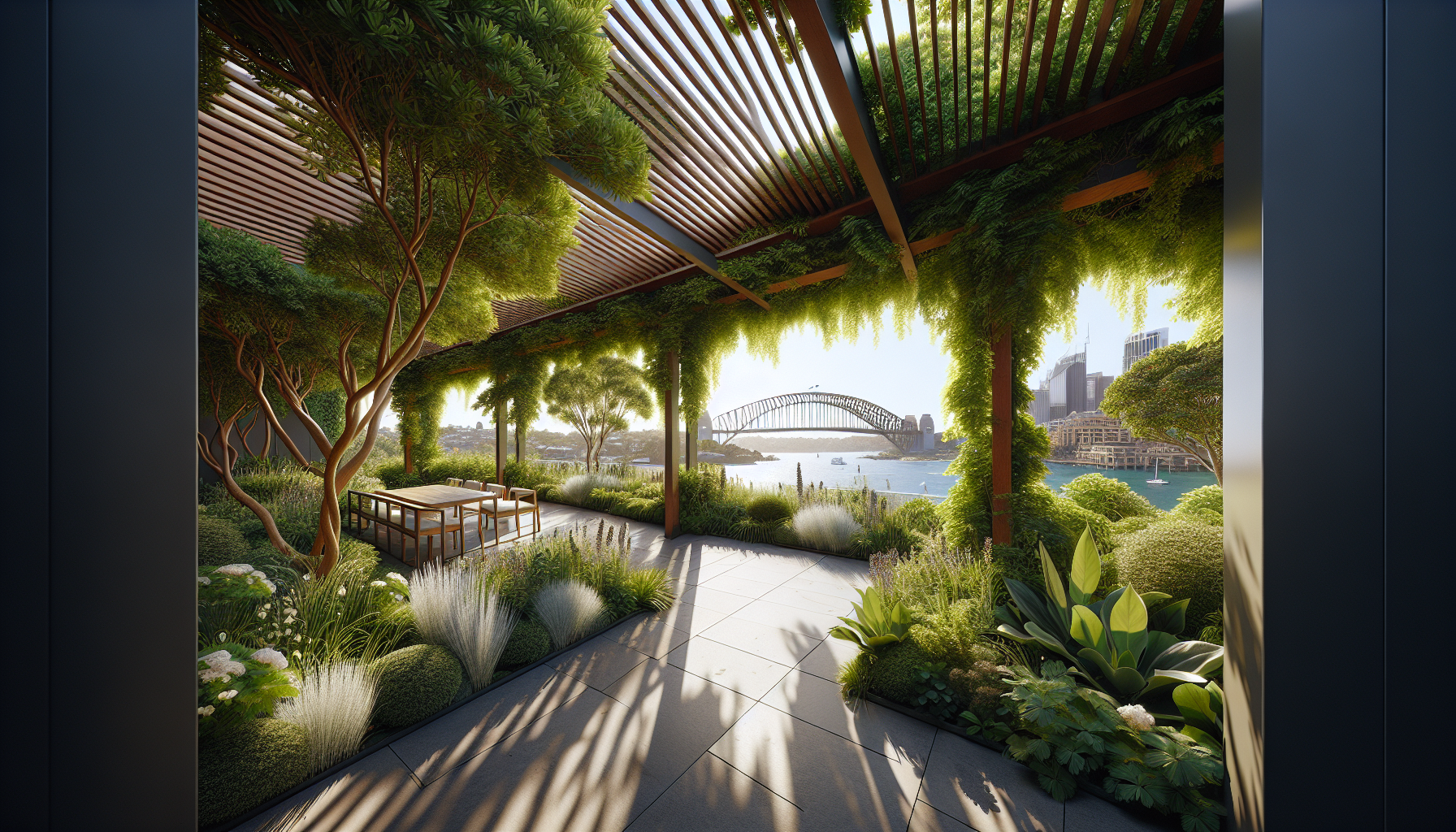Types of Shade Structures: Finding the Perfect Design for Your Space
When it comes to creating a comfortable and inviting outdoor area, choosing the right type of shade structure is essential. Whether you are enhancing a residential property or designing a public space, the variety of shade structures available provides an array of options tailored to your specific needs and aesthetic preferences.
Pergolas
Pergolas are popular for those looking to add a classic and elegant touch to their outdoor living spaces. Characterized by their cross-beamed roofs and open-air design, pergolas offer partial sun blockage and ample airflow, making them ideal for garden settings or as an extension of living spaces. Frequently constructed from wood, vinyl, or aluminum, pergolas can be customized with climbing plants or retractable canopies to provide additional shade and privacy.
Canopies and Awnings
For a more flexible shade solution, canopies and awnings are the go-to options. These structures are typically made of durable fabric and can be either fixed or retractable, allowing homeowners to adjust the amount of sun exposure to their liking. Awnings are often attached to the exterior of a building and extend outward, protecting from both sun and rain. At the same time, freestanding canopies can be easily moved to different locations within a space, offering versatile shade for outdoor events and gatherings.
Gazebos
Gazebos are yet another type of shade structure that adds an element of sophistication and shelter to any outdoor setting. With a solid roof and open sides, gazebos create a distinct area that can serve multiple purposes, from a quiet reading nook to an entertainment pavilion. They come in various shapes, such as octagonal, rectangular, or square. They can be crafted from materials like wood, metal, or composite, each contributing to a different look and level of durability. Incorporating a gazebo into a landscape boosts its functionality and enhances its overall aesthetic appeal.
Each shade structure type presents its own set of benefits and can be designed to complement the surrounding environment while meeting the specific demands of climate, space, and individual taste. Whether the goal is to create a cozy retreat or to provide a large shaded area for dining and social events, there’s a shade structure that perfectly fits the design and purpose of your space.
Benefits of Installing a Shade Structure in Your Outdoor Area
Installing a shade structure in your outdoor area is more than just an aesthetic addition; it brings many practical advantages to your everyday living. One of the standout benefits is the provision of UV protection. By offering a shaded oasis, these structures significantly reduce exposure to harmful ultraviolet rays, which can cause skin damage and lead to more severe health issues over time. This added UV protection is especially beneficial during peak sun hours when the risk of exposure is at its highest.
Another key advantage of incorporating a shade structure is its capacity to extend your living space. A comfortable shaded area naturally invites you and your family to spend more time outdoors, enjoying your garden’s fresh air and tranquility. This can be particularly valuable when you entertain guests, allowing outdoor dining options or simply a cool, comfortable spot to socialize, regardless of the blazing sun or light rain showers.
Enhanced Comfort and Energy Efficiency
Comfort is a significant factor in our enjoyment of outdoor spaces, and shade structures excel in providing it. They create a cooler environment by blocking direct sunlight, which can lower the temperature beneath the shade by up to 15 degrees. The cooler microclimate makes your space more pleasant, even in the height of summer. Additionally, when positioned near your home, these structures can help reduce indoor temperatures, decreasing air conditioning usage and thus fostering energy efficiency and cost savings on utility bills.
Furthermore, shade structures are functional and add value to your property. They are seen as a desirable feature by prospective home buyers, who often envision the outdoor space as a key component of their lifestyle. Installing a shade structure can make your property stand out in the real estate market, potentially increasing its value. Moreover, with a vast array of designs and materials available, you can customize your shade structure to seamlessly integrate with your home’s architecture and personal taste, ensuring that it enhances the visual appeal of your outdoor area.
Selecting Materials for Your Shade Structure: Durability and Aesthetics
When choosing materials for your shade structure, you should balance durability and aesthetics. Material choice can greatly influence the structure’s longevity and ability to complement your outdoor space. Whether you’re considering a permanent fixture like a pergola or a more temporary solution such as awnings, understanding the properties of different materials is crucial.
Durability Factors to Consider
The primary concern for outdoor shade structures should be their ability to withstand the elements. Materials that offer UV resistance will prevent the color from fading and the fabric from weakening. Metals like aluminum and stainless steel are popular for their rust resistance and strength. However, they must be properly coated or treated to maintain their appearance. Natural wood provides a classic, warm look but requires regular maintenance to combat moisture and insect damage. For those seeking a more eco-friendly option, composite materials blend wood fibers and plastic to provide the look of wood without as much maintenance.
Aesthetic Choices in Materials
Beyond durability, the material you choose for your shade structure should reflect your style and complement your home’s architecture. For a modern and industrial look, metals like powder-coated aluminum can create sleek lines and be colored according to preference. On the other hand, fabrics provide a way to integrate pattern and color, and materials like Sunbrella offer a wide range of options while also providing excellent fade resistance. When opting for wood, consider high-quality options such as cedar or redwood that last long and age beautifully.
The debate between natural and synthetic materials also comes into play, each offering unique appeal. Natural materials blend seamlessly with outdoor environments but may require more care. Synthetics, created for durability and ease of maintenance, have advanced to closely mimic natural materials in look and feel. As an intermediate solution, some manufacturers offer hybrid materials combining natural and synthetic elements for enhanced durability and a more traditional appearance.
Before making a final decision, assess the maintenance level you are willing to undertake and the visual impact you desire for your outdoor space. Properly selected materials can ensure that your shade structure remains a durable and aesthetically pleasing addition to your home for years to come.
Step-by-Step Guide to Installing Your Shade Structure
The process may initially seem daunting when setting up your new shade structure. However, with a step-by-step approach, you can ensure your shade is installed safely and efficiently. This guide will walk you through the essential steps to get your shade structure up and providing comfort and protection from the sun in no time.
Gather Your Tools and Materials
Before you begin, it’s crucial to have all your tools and materials at hand. You will need a ladder, a drill with various drill bits, a level, a tape measure, concrete (for anchoring), and the hardware that comes with your shade structure kit. Make sure you also have protective eyewear and gloves for safety. Take inventory of all the parts included with your kit to ensure nothing is missing before you start.
Prepare the Installation Area
Preparation of the area is just as important as the installation itself. Begin by choosing the location for your shade structure and measure precisely to determine where the posts will be installed. It’s best to mark these spots. If you install your shade on a lawn or dirt, you must dig holes for the posts and set them in concrete for stability. For deck installations, ensure the surface is clean, and the supporting structure can handle the additional weight.
Assemble the Frame
With the ground or surface prepared, you can now focus on assembling the frame. Start by laying out the posts and cross beams on the ground. Follow the manufacturer’s instructions carefully as you bolt the pieces together. Using a level is essential during this stage to ensure your structure is perfectly horizontal and vertical. This will prevent any uneven tension once the shade is installed, which could lead to damage or ineffective shading.
Attach the Shade Cloth
After the frame is secure and level, it’s time to attach the shade cloth. Begin at one corner and work your way across, pulling the fabric tight to avoid any sags. Use the provided hardware to fasten the cloth, ensuring it is evenly distributed to prevent any ripples or gaps. If your kit includes tensioning systems, follow the specific instructions to apply the correct tension, which will help maintain the longevity and performance of your shade structure.
Remember, taking your time during installation will pay off with a well-constructed and durable shade structure. For the best results, pay particular attention to the tension of the shade cloth and the stability of the posts.
Maintenance Tips to Prolong the Life of Your Shade Structure
Caring for your shade structure is paramount to ensure its longevity and maintain its appearance. One of the most crucial aspects of maintenance is regular cleaning. Depending on the material of the shade structure, you may simply need to rinse it with a hose to remove superficial debris. A mild soap solution and a soft brush can do wonders for more stubborn spots and stains. Never use harsh chemicals or abrasive cleaners, as they can damage the fabric and compromise the integrity of the shade structure.
Periodic inspection is another key facet of shade structure care. At least once a season, check for any signs of wear and tear, such as fraying or tearing in the fabric or damage to the frame. Addressing these issues early on can prevent them from turning into more costly repairs. It is also essential to ensure that all connections are tight and that there are no loose bolts or brackets. A stable structure lasts longer and is safer for those who enjoy its shade.
Surprisingly, Protection from the elements includes safeguarding the shade structure from prolonged exposure to adverse weather conditions. If possible, disassemble and store your shade structure in a dry, sheltered place during extreme weather events or seasons when it is not in use. This can prevent excessive wear from heavy rains, snow, and UV exposure. For structures that cannot be easily removed, consider using a protective cover designed specifically for this purpose, choosing one that allows for adequate airflow to prevent mold and mildew growth.
Addressing Mold and Mildew
Mold and mildew can quickly become problematic for shade structures in humid climates or in frequent wet conditions. Regular inspections can help to spot early signs of mold and mildew, which typically appear as black or green patches on the fabric. Treat these areas promptly with a solution formulated for outdoor fabrics, and follow the instructions carefully to prevent discoloration or material damage. After cleaning, allow your shade structure to dry completely before storing or covering it to avert any moisture being trapped, which could exacerbate the problem.




